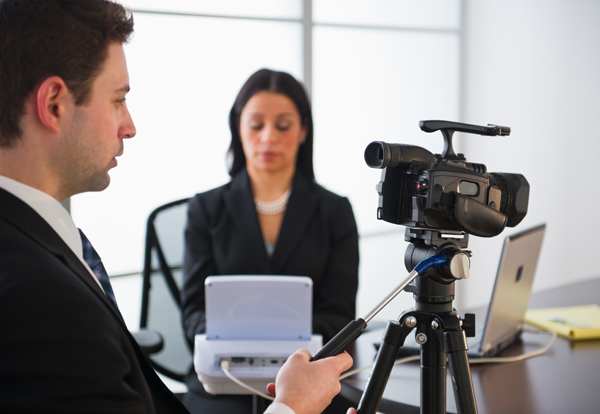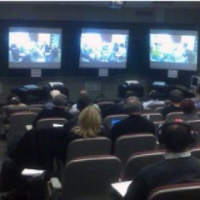Legal Videography: A Crucial Element in Building Strong Legal Cases
Why Lawful Videography Is Critical for Accurate Court Recordings
The duty of lawful videography in courtroom settings can not be overstated, as it offers as a crucial device for preserving the stability of court documents. The effects of incorporating legal videography into basic court room techniques increase vital concerns concerning its more comprehensive impact on the lawful system.
Importance of Visual Evidence
In the world of legal procedures, the relevance of aesthetic proof can not be overstated. Visual proof offers as an effective device in establishing truths, substantiating testimonies, and improving the general clarity of an instance. This kind of proof, that includes photos, videos, and representations, can give a substantial context that verbal summaries usually lack, consequently supplying courts and judges a more clear understanding of the conditions bordering a case.
In addition, visual evidence help in the retention of information. Human cognition is naturally aesthetic, and people are more probable to remember and comprehend details presented in a visual style. In the courtroom, this can be crucial, as engaging visual evidence can guide point of views and enhance the narrative presented by legal representatives.
In addition, using visual proof can minimize misunderstandings and ambiguities that typically emerge from spoken exchanges. By providing a direct depiction of occasions, visual evidence aids to get rid of subjective analyses and promotes an extra objective evaluation of the truths. Subsequently, the assimilation of visual proof into legal procedures not just enhances the honesty of the judicial procedure but likewise boosts the probability of achieving a just outcome.
Catching Non-Verbal Hints
Utilizing sophisticated videography methods can significantly boost the capture of non-verbal hints throughout legal proceedings. Non-verbal interaction, consisting of faces, body movement, and eye call, plays an important duty in conveying feelings and intents that may not be explicitly stated in spoken statement. legal videography. Lawful videography uses high-definition electronic cameras and tactical angles to make sure that these refined hints are recorded with clarity and accuracy
The ability to examine non-verbal behavior can provide useful context to statements made during court sessions. For example, a witness's unwillingness or self-confidence can be translated with their posture or motions, potentially affecting the jury's understanding of reputation. In addition, using close-up shots can help concentrate on a speaker's expressions, permitting a much more nuanced understanding of the testimony.
In addition, incorporating numerous cam angles can develop a detailed view of communications, highlighting dynamics in between parties included. This multifaceted approach not only improves the precision of the court document however additionally aids in maintaining the integrity of the judicial process - legal videography. Inevitably, catching non-verbal cues via legal videography cultivates a richer, extra full representation of court proceedings

Enhancing Statement Reliability
The reliability of statement can be significantly reinforced with using top quality legal videography. Video clip recordings work as an objective tool that catches not just the talked words of witnesses but likewise the nuances of their delivery, including tone, pacing, and emotional expressiveness. This complex documents offers a clearer understanding of the witness's trustworthiness and intentions, which can be crucial in legal procedures.
Additionally, lawful videography lessens the potential for false impressions that may emerge from created records alone. When jurors can observe a witness's attitude and body movement along with their statement, they are much better outfitted to evaluate the credibility and integrity of the evidence provided. This aesthetic context can strengthen the testimonial narrative, making it much more engaging and reputable.
Furthermore, the presence of a video clip recording can prevent potential variances in testimony. Witnesses might be much more cautious in their statements when they know they are being recorded, resulting in more exact and truthful accounts. In general, top notch lawful videography improves the integrity of statement, ensuring that the court has access to a total and truthful representation of the truths as shared by the witnesses.
Sustaining Appeals and Reviews
Lawful videography plays a vital function in sustaining charms and reviews by giving a detailed visual document of court proceedings. This aesthetic paperwork catches not just the talked words of witnesses and attorneys yet likewise the subtleties of body movement, tone of voice, and court dynamics. Such elements can be pivotal in understanding the context of testaments and debates presented.
In the appellate process, where the emphasis gets on errors of legislation and procedural justness, a video this contact form document can act as an important device for appellate courts. It allows judges to evaluate the original test context, guaranteeing that choices are based on a full understanding of the proceedings. The capability to visually examine the behavior of witnesses or the interactions in between parties can disclose understandings that created records might forget.

In addition, legal videography can assist in making clear obscurities in statements or procedural judgments, thus strengthening the basis for an allure. By offering a trusted, unbiased account of what taken place in court, lawful videography not just sustains the stability of the lawful process however additionally encourages all parties involved to make educated choices concerning their cases.
Simplifying Court Room Procedures
Enhancing court efficiency, legal videography enhances processes by offering instant accessibility to aesthetic documents of procedures. This modern technology permits courts, lawyers, and courts to review critical testament and evidence, guaranteeing that all parties have a clear understanding of the case. By recording the nuances of verbal and non-verbal interaction, videography enhances the document, making it less complicated to grasp the context and weight of testaments.

Furthermore, video clip recordings can help with remote participation in hearings, permitting for greater versatility in scheduling and involvement, which is particularly beneficial in complicated cases entailing several stakeholders.
Conclusion
Finally, legal videography plays an important role in guaranteeing accurate court recordings by giving necessary aesthetic proof that records both verbal and non-verbal communication. This practice enhances the dependability of testimonies, supports appellate evaluations, and simplifies court like it processes. By fostering a thorough understanding of court room dynamics, lawful videography ultimately adds to much more equitable judicial outcomes, strengthening the stability of the legal system and promoting educated decision-making.